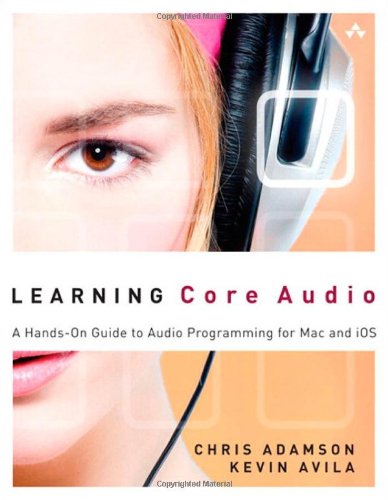
Learning Core Audio: A Hands-On Guide to Audio Programming for Mac and iOS
James Boer
Hardcover - 336 pages (April 2012)
Audio can affect the human brain in the most powerful and profound ways. Using Apple's Core Audio, you can
leverage all that power in your own Mac and iOS software, implementing features ranging from audio capture
to real-time effects, MP3 playback to virtual instruments, web radio to VoIP support. The most sophisticated
audio programming system ever created, Core Audio is not simple. In Learning Core Audio, top Mac
programming author Chris Adamson and legendary Core Audio expert Kevin Avila fully explain this challenging
framework, enabling experienced Mac or iOS programmers to make the most of it. In plain language, Adamson
and Avila explain what Core Audio can do, how it works, and how it builds on the natural phenomena of sound
and the human language of audio. Next, using crystal-clear code examples, they guide you through recording,
playback, format conversion, Audio Units, 3D audio MIDI connectivity, and overcoming unique challenges of
Core Audio programming for iOS. Coverage includes: mastering Core Audio's surprising style and conventions;
recording and playback with Audio Queue; synthesizing audio; perform effects on audio streams; capturing from
the mic; mixing multiple streams; managing file streams; converting formats; creating 3D positional audio;
using Core MIDI on the Mac; leveraging your Cocoa and Objective-C expertise in Core Audio's C-based environment,
and much more. When you've mastered the "black arts" of Core Audio, you can do some serious magic. This book
will transform you from an acolyte into a true Core Audio wizard.
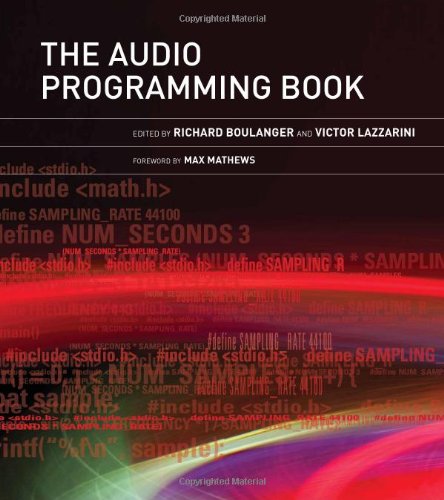
The Audio Programming Book
Richard Boulanger (Editor), Victor Lazzarini (Editor), Max Mathews (Foreword)
Hardcover - 990 pages & DVD (October 2010)
This comprehensive handbook of mathematical and programming techniques for audio signal processing will
be an essential reference for all computer musicians, computer scientists, engineers, and anyone interested
in audio. Designed to be used by readers with varying levels of programming expertise, it not only provides
the foundations for music and audio development but also tackles issues that sometimes remain mysterious
even to experienced software designers. Exercises and copious examples (all cross-platform and based on free
or open source software) make the book ideal for classroom use. Fifteen chapters and eight appendixes cover
such topics as programming basics for C and C++ (with music-oriented examples), audio programming basics and
more advanced topics, spectral audio programming; programming Csound opcodes, and algorithmic synthesis and
music programming. Appendixes cover topics in compiling, audio and MIDI, computing, and math. An accompanying
DVD provides an additional 40 chapters, covering musical and audio programs with micro-controllers, alternate
MIDI controllers, video controllers, developing Apple Audio Unit plug-ins from Csound opcodes, and audio
programming for the iPhone.The sections and chapters of the book are arranged progressively and topics can be
followed from chapter to chapter and from section to section. At the same time, each section can stand alone
as a self-contained unit. Readers will find The Audio Programming Book a trustworthy companion on their journey
through making music and programming audio on modern computers.
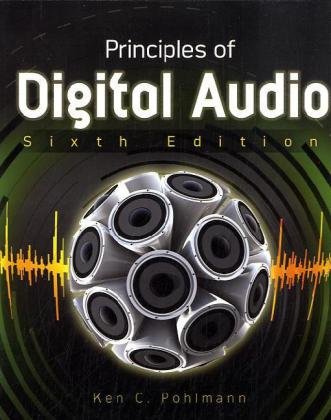
Principles of Digital Audio
Ken Pohlmann
Paperback 6th edition - 816 pages & CD-ROM (September 2010)
Gain a thorough understanding of digital audio tools, techniques, and practices from this completely revised and
expanded resource. Written by industry pioneer and Audio Engineering Society Fellow Ken C. Pohlmann, Principles
of Digital Audio, Sixth Edition, describes the technologies behind today's audio equipment in a clear, practical
style. Covering basic theory to the latest technological advancements, the book explains how to apply digital
conversion, processing, compression, storage, streaming, and transmission concepts. New chapters on Blu-ray,
speech coding, and low bit-rate coding are also included in this bestselling guide.
• Learn about discrete time sampling, quantization, and signal processing
• Examine details of CD, DVD, and Blu-ray players and discs
• Encode and decode AAC, MP3, MP4, Dolby Digital, and other files
• Prepare content for distribution via the Internet and digital radio and television
• Learn the critical differences between music coding and speech coding
• Design low bit-rate codecs to optimize memory capacity while preserving fidelity
• Develop methodologies to evaluate the sound quality of music and speech files
• Study audio transmission via HDMI, VoIP, Wi-Fi, and Bluetooth
• Handle digital rights management, fingerprinting, and watermarking
• Understand how one-bit conversion and high-order noise shaping work.
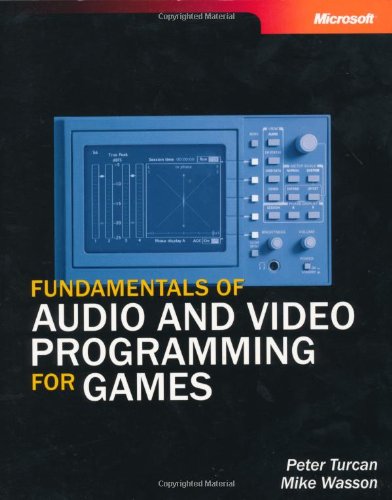
Fundamentals of Audio and Video Programming for Games
Peter Turcan
Paperback - 400 pages & DVD (November 2003)
Deliver console-rocking sound, music, and video effects to your games with this all-in-one toolkit for C++ game
programmers. Load the CD — and experience Microsoft's Digital Media developers at play, learning how to
use Microsoft DirectX 9 technologies to produce amazing, professional-quality effects. From mixing and moving
sounds around a 3-D space to taking video to the third dimension, you get expert insights and performance tips
direct from the developers, along with a game-ready arsenal of code, copyright-free audio and video, and
ready-to-use effects on CD. It's everything you need to fuel your creativity — and take your game players
to spectacular new 3-D worlds!
Discover how to:
• Mix mono, stereo, and 3D sound — and add special effects
• Create reverb and other environmental sound effects
• Stream multiple sounds, create buffers, and get tips for optimizing audio performance
• Seamlessly render video cut scenes onto 3D animations
• Add textures to video and create fades, zooms, picture-in-picture, fly-ins, and more
• Learn video mixing techniques — and write your own compositors to invent one-of-a-kind effects
• Control hue, saturation, contrast, and brightness settings for video
• Create AVI movies from Direct3D animation
• Produce professional-quality content from raw audio and videoGet code, special effects files, and eBook on CD
CD Features:
• Reusable C++ source code
• Seven DirectSound samples, including High5, Cacophony, and Rumpus 3D SFX
• Nine DirectShow samples, including TeeVee, Puzzle, AlphaBurst, and Pixellator
• Tool to create 5.1 or 6.1 sounds from mono or stereo wave files
• Catalog of copyright-free audio and video
• Fully searchable eBook.
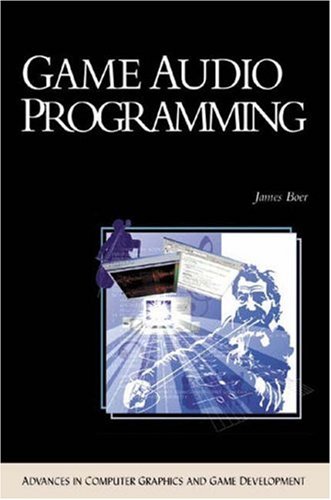
Game Audio Programming
James Boer
Hardcover - 640 pages & CD-ROM (October 2002)
Game Audio Programming is a comprehensive guide to interactive audio programming for the Microsoft Windows platform.
Written for C++ programmers implementing an audio system for an entertainment or multimedia title, this practical
reference covers a wide range of topics relevant to today's audio programmers, including DirectX Audio, audio
decompression libraries, hardware filters and effects, geometric representation of world data for effects, occlusion
and obstruction, and more. In addition, a full-featured, documented, and internally commented game audio programming
(GAP) library is referenced throughout the book to explain various concepts. The library is included on the companion
CD-ROM and can be used as either a ready-to-use library for your own games or as reference code to help implement an
audio system.
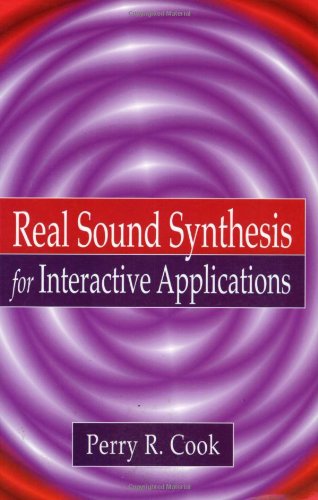
Real Sound Synthesis for Interactive Applications
Perry R. Cook
Hardcover - 263 pages (June 2002)
Virtual environments such as games and animated and "real" movies require realistic sound effects that can be
integrated by computer synthesis. The book emphasizes physical modeling of sound and focuses on real-world
interactive sound effects. It is intended for game developers, graphics programmers, developers of virtual
reality systems and training simulators, and others who want to learn about computational sound. It is written
at an introductory level with mathematical foundations provided in appendices.
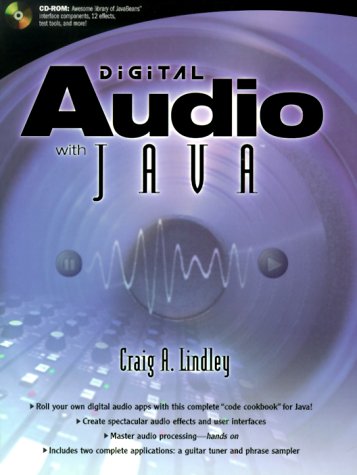
Digital Audio with Java
Craig A. Lindley
Paperback - 512 pages & CD-ROM (October 1999)
This is the first complete, practical programmer's guide to developing audio processing devices and applications
with Java. Perfect for anyone interested in audio, it provides a cookbook of components and techniques for
professional-quality audio applications. Leading audio developer Craig Lindley explains the theory and practice of
audio effects as found in programs like Cakewalk and CoolEdit, and shows how a wide variety of audio applications
can be built with Java. Lindley covers a wide variety of user interface techniques for audio applications, including
simulated equipment front panels, audio controls and indicators, audio potentiometers, LED indicators, meters, display
devices, and more. He introduces an extensible architecture for developing audio processing effects; covers digital
filters, audio sources and monitors; audio processors, sinks, and more. The book concludes with two detailed
applications: a phrase sampler and a guitar/bass tuner. The accompanying CD-ROM includes both applications, as well
as an awesome toolset for creating great sounds. You get a complete library of JavaBeans user interface controls for
building audio devices; expert audio test tools, and 12 audio processing effects, including phaser, delay, reverb,
pitch shifter, flanger, and more.
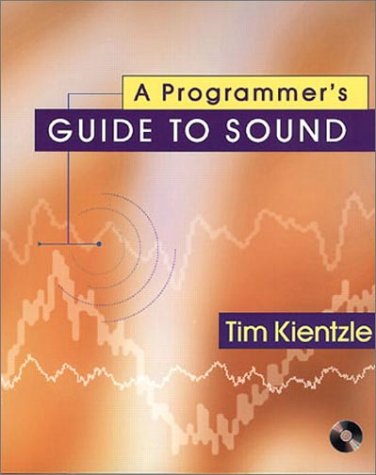
A Programmer's Guide to Sound
Tim Kientzle
Paperback - 464 pages & CD-ROM (October 1997)
An all-in-one introduction to implementing sound, this guide provides a comprehensive practical resource for
programmers. Tim Kientzle, technical editor of Dr. Dobb's Journal, presents the basic principles of sound and
sound processing, together with concrete implementation details for a variety of sound file formats and
algorithms. The CD-ROM includes royalty-free sound libraries and a rich collection of utilities.
A Programmer's Guide To Sound provides detailed technical information about audio storage, processing,
and compression, and includes tested C++ source code. Developers who want to add sound technology to their
applications will find all the details they need to access low-level sound services on Win32, Mac OS, and
UNIX; decompress MPEG, IMA ADPCM, and "mu"-Law data; read from WAVE, VOC, AIFF, and AU file formats;
and play MIDI and MOD music files.
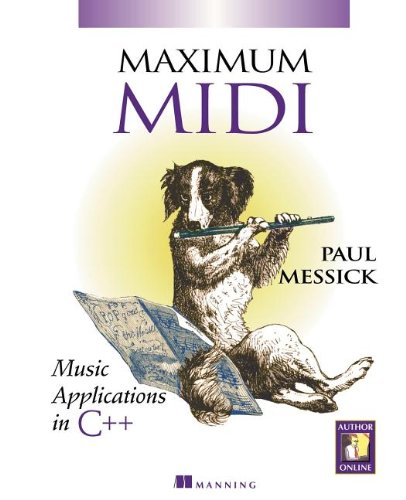
Maximum MIDI: Music Applications in C++
Paul Messick
Paperback - 479 pages & CD-ROM (September 1997)
More than a dozen example programs, along with ToolKit's source code, gives programmers everything they need to
develop music computer programs using Musical Instrument Digital Interface (MIDI).








